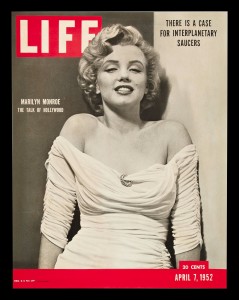 Why do we shudder when we watch a tarantula crawling across James Bond’s chest in a 007 movie? And what can looking into a monkey’s brain tell us about our capacity to share in the emotional experiences of other people? Answers to these questions appear in The Empathic Brain: How the Discovery of Mirror Neurons Changes our Understanding of Human Nature, the fascinating and entertaining new book by Christian Keysers, Professor for the Social Brain at the University Groningen in the Netherlands. Keysers, one of the world’s most distinguished and innovative neuroscientists, was part of the famous team at the University of Parma, Italy, that discovered auditory mirror neurons in the macaque monkey, which has revolutionised thinking about how empathy works in human beings. In this exclusive interview for Outrospection, I talk to him about his book, and how far neuroscience has really taken us in our understanding of empathy. Continue reading
Why do we shudder when we watch a tarantula crawling across James Bond’s chest in a 007 movie? And what can looking into a monkey’s brain tell us about our capacity to share in the emotional experiences of other people? Answers to these questions appear in The Empathic Brain: How the Discovery of Mirror Neurons Changes our Understanding of Human Nature, the fascinating and entertaining new book by Christian Keysers, Professor for the Social Brain at the University Groningen in the Netherlands. Keysers, one of the world’s most distinguished and innovative neuroscientists, was part of the famous team at the University of Parma, Italy, that discovered auditory mirror neurons in the macaque monkey, which has revolutionised thinking about how empathy works in human beings. In this exclusive interview for Outrospection, I talk to him about his book, and how far neuroscience has really taken us in our understanding of empathy. Continue reading
Category: measuring empathy
Marilyn Monroe and the dangerous science of empathy
 Empathy is becoming a science. That was the message of a recent article in The Observer newspaper by Cambridge psychologist Simon Baron-Cohen, based on his new book, Zero Degrees of Empathy: A New Theory of Human Cruelty. Our brains, he argues, contain an ’empathy circuit’. But if empathy is wired into us, does that leave any scope for expanding our empathic potential? Continue reading
Empathy is becoming a science. That was the message of a recent article in The Observer newspaper by Cambridge psychologist Simon Baron-Cohen, based on his new book, Zero Degrees of Empathy: A New Theory of Human Cruelty. Our brains, he argues, contain an ’empathy circuit’. But if empathy is wired into us, does that leave any scope for expanding our empathic potential? Continue reading
Global Map of the Empathic Imagination
 Imagine you had to invent a new kind of atlas which showed the extent of our planet’s economic and cultural globalization, and the interconnections between the world’s environmental crises. That’s the aim of the ATLAS of Interdependence, a project being masterminded by the new economics foundation, the Open University and Sheffield University. The ATLAS will be an evolving online resource containing entries from geologists, geographers, scientists, journalists, artists, campaigners and historians, each providing their personal vision of global interdependence. Here is a sneak preview of my own entry, called the Global Map of the Empathic Imagination. Do let me know if you think it needs any additional landmarks. Continue reading
Imagine you had to invent a new kind of atlas which showed the extent of our planet’s economic and cultural globalization, and the interconnections between the world’s environmental crises. That’s the aim of the ATLAS of Interdependence, a project being masterminded by the new economics foundation, the Open University and Sheffield University. The ATLAS will be an evolving online resource containing entries from geologists, geographers, scientists, journalists, artists, campaigners and historians, each providing their personal vision of global interdependence. Here is a sneak preview of my own entry, called the Global Map of the Empathic Imagination. Do let me know if you think it needs any additional landmarks. Continue reading
Reading the Mind in the Eyes
I’ve recently been involved in advising a fascinating BBC television series called Child of Our Time about how to measure empathy. This long-term project involves tracking the lives and development of 25 children from a range of social and ethnic backgrounds born in 2000, over a period of twenty years. The children are now ten, and the series currently in production aims to unveil the influences that shape their varying personality traits.
One of the empathy tests we discussed is called Reading the Mind in the Eyes, created by the Cambridge psychologist Simon Baron-Cohen, an expert on autism and author of a controversial book called The Essential Difference, which argues that women are more naturally empathetic than men. The test effectively gauges how good you are at judging someone’s emotional state through looking at their eyes. You are presented with 36 sets of eyes, and for each of them you are instructed to choose which one of four words best describes what the person in the picture is thinking or feeling. Continue reading